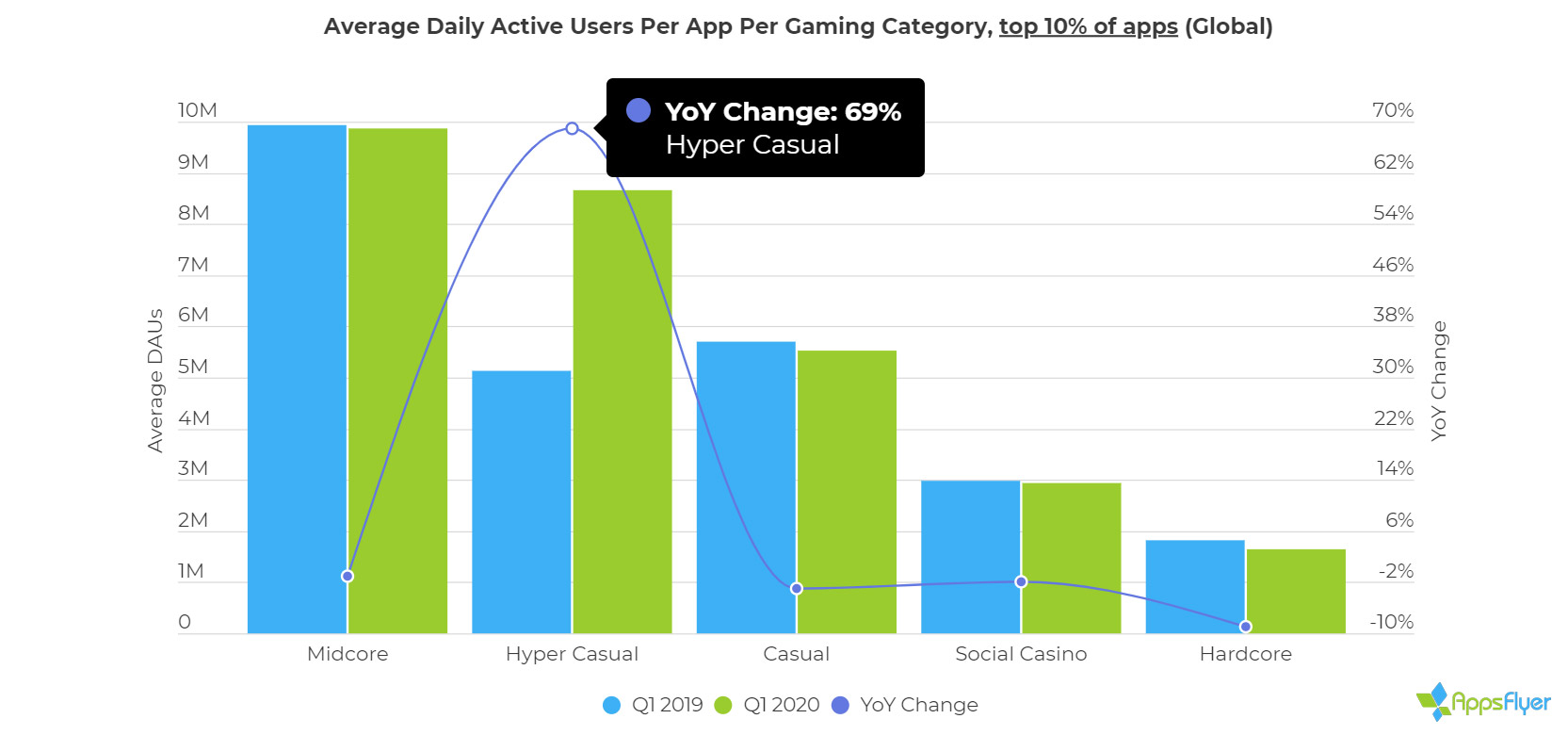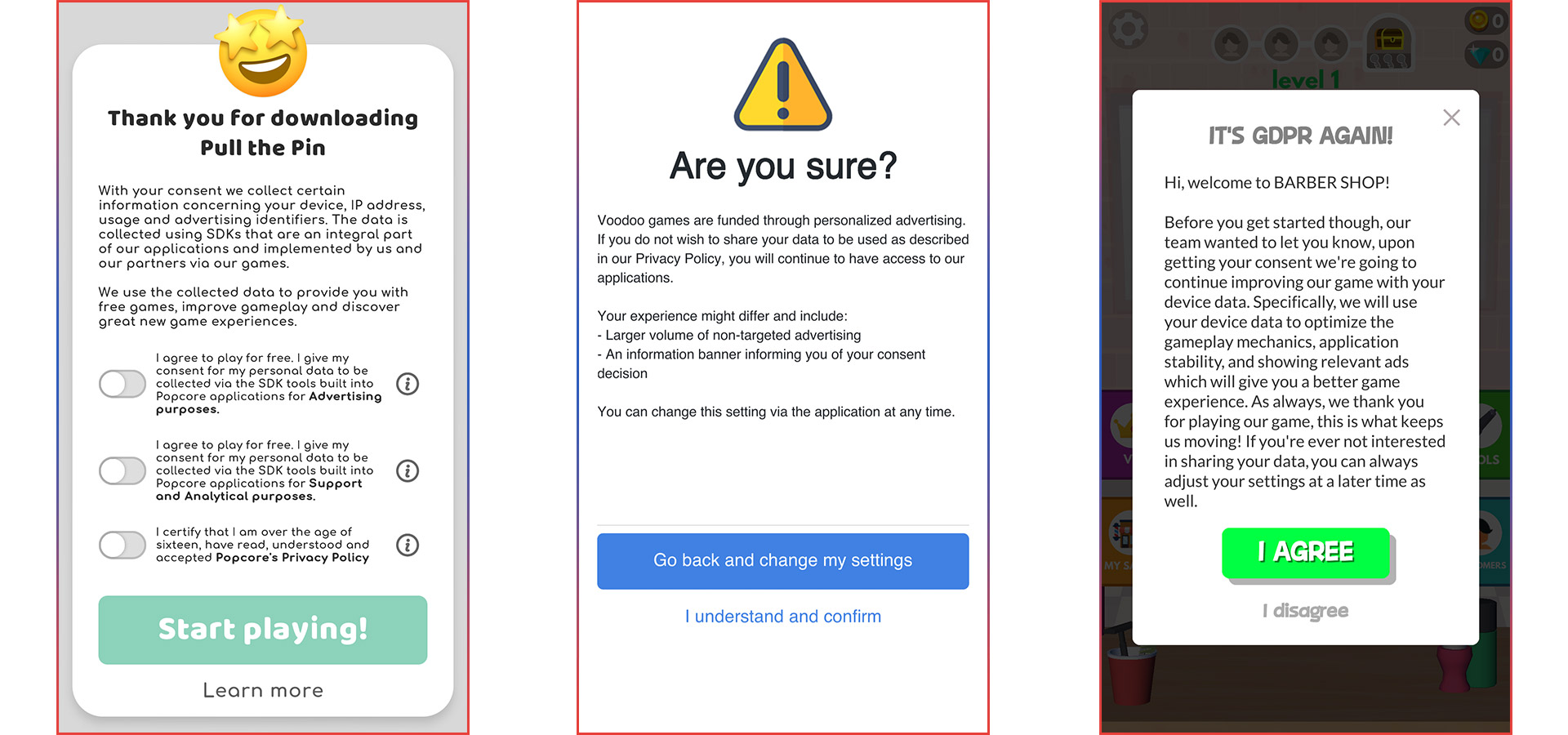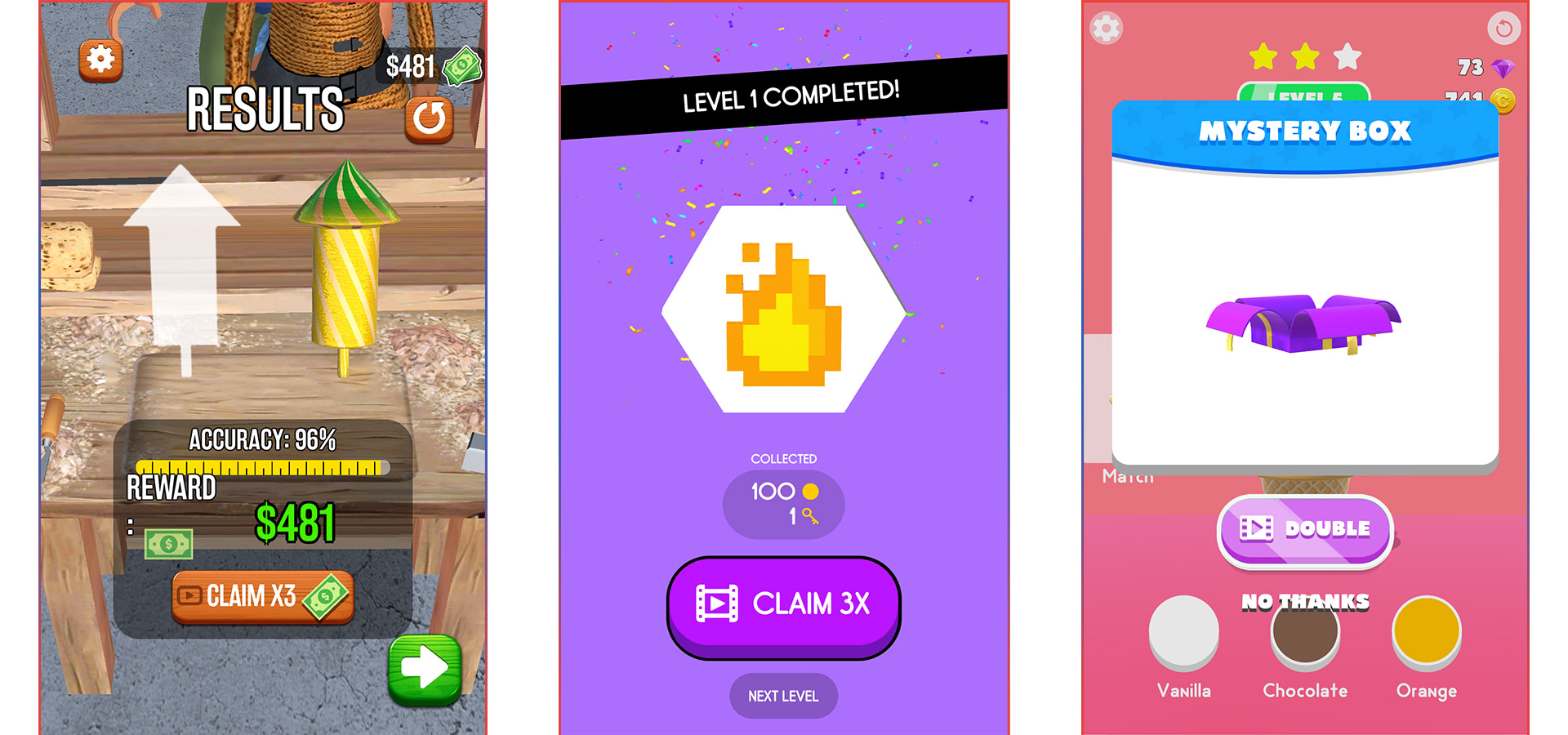How to Monetize Hyper-Casual Games with Success
Hyper-casual games have seen unprecedented growth over the past year and game developers have learned how to survive in this fast-paced environment. In this article, we'll dive into how to monetize a hyper-casual mobile game.

It is not surprising to find tons of hyper-casual titles in the top charts these days. What is surprising, though, is the volatility of these super successful hyper-casual games.
Hyper-casual titles that are in the top charts today, a few weeks ago, were almost non-existent. And a few weeks from now, they will probably disappear again. This volatility is unthinkable in other industries. However, game developers have learned how to survive in this fast-paced environment and, some of them, are mastering it.
Plenty of mobile developers have embraced the hyper-casual culture and live in this ecosystem. Compared to other mobile apps & gaming genres that are more static, getting noticed is much harder; hyper-casual games have a chance to thrive.
Let's talk about the key elements of the successful hyper-casual games, and all you need to know to become a hit in tomorrow’s top charts.
The Hyper Casual Game Scenario.
The hyper-casual boom started a few years ago. However, it wasn’t until last year when it really took off.
During the coronavirus pandemic, the number of downloads kept increasing, by almost 30% compared with the previous time frames. People need new forms of entertainment, and mobile games are quick & easy to get.
You have at your disposal several monthly reports, where companies analyze the causes behind this huge growth in the mobile industry during the COVID-19 lockdown
Hyper-casual games have seen unprecedented growth over the past year. From 2018 to 2019, the number of hyper-casual games in the app stores increased by 170%, and users downloaded them +150%. This growth is x3 the industry average!
The prompt evolution of the hyper-casual genre and the size of its releases, combined with its model business so data-driven and iterative, has created a humongous scenario. At this date, hyper-casual games generate a 4 billion dollars industry with plenty of opportunities for game developers.

Source: State of Gaming 2020 from AppsFlyer
Who plays hyper-casual games?
There are an estimated 650 million Hyper Casual players, and, since they are 50-50 men and women, they have a broad spectrum of audiences. What you attract will mostly depend on the style of your videogame.
It doesn’t matter who you are, your country, or your age. There’s always a hyper-casual game that can immediately connect with you and your frame of mind.
Since hyper-casual games have an audience that overlaps with other genres, it’s not unusual to see players who get better acquainted with specific types of games and move to more casual or mid-core titles.
Some hyper-casual players also tend to move to other non-casual games that share the same IP, branding, or style. We often detect migration flows from hyper-casual puzzle or sports games to mid-core games with a more solid monetization strategy and better long-term retention rates.
But that happens in the opposite direction too.
Players that usually play puzzle, arcade, sports, and other mobile games genres, quickly shift to hyper-casual games. They fulfill their needs without tutorials or previous involvement. They can go straight to the action a few seconds after they install the game. The game does not require them to learn complex mechanics, build a set of characters or farm their characters to higher levels.
But this also causes a higher rotation between apps on hyper-casual users. On average, they install x10 times more apps than non-hyper casual gamers.
Thus, it is difficult to detect and pin the “pure” hyper-casual gamer.
Designing Successful Hyper-Casual Games
Most mobile game developers have the knowledge and the skills to develop hyper-casual games. However, the hard part for game devs is to adapt their business model & working methodologies to generate truly successful hyper-casual games.
You may have heard that “hyper-casual” is not just a genre. This sentence relies on the fact that one does not simply produce and monetize a hyper-casual game like any other mobile genre.

You will have to tweak and adapt your game to new retention models, engagement features, and even monetization strategies.
Studios with a broad experience developing hyper-casual games usually say that the user gameplay should be below one minute. Your game should allow the player to have a full game session even if they’re just waiting in the supermarket queue or while traveling with public transport.
However, there are no one-size-fits-all mechanics in hyper-casual games. Instead, you must focus on which feelings your users will have while using those mechanics, which usually are:
Triumph: Players must achieve success with minimum effort.
Fulfillment: Generate a positive experience after the game session.
Show-off: Gameplays worth sharing & watching on Youtube or other social media.
Every level must be a bit harder than the previous one. The user has to feel he has progressed but always avoiding feelings of failure. Punitive and complex mechanics are a no-go.
The challenge, however, is how to build a game and optimize its mechanics to effectivelygenerate the desired feelings within your users. And this will all vary on each title.
Hyper-Casual Games are ultimately Data-Driven
It is hard to build hyper-casual games for game developers who are, at the same time, players. Creators often fall in love with their creations, and that may become an obstacle to monetizing their hyper-casual games with success. They are focused on what they would like to see or get, instead of what drives conversion rates.
Passion is a strong driver when developing video games. But the industry has shown that the most successful hyper-casual games are data-driven.
As soon as you have the first version of your game, you should develop a short video ad of your game. With it, you can immediately run a test campaign to check your CTR (Click-Through Rate), CPI (Cost per Install), and the quality of your users. It will become a good starting point to check if your game has the potential to become successful.
Some developers that play and enjoy video games usually fall on the misconception of building casuals or idle games, believing that they are creating hyper-casual games.
If your game does not reach certain milestones -each publisher set up their own KPIs the way works best for them-, then change it, iterate it, or even kill your game and move on to the next idea.
Developers who move quickly in this industry have a leading advantage over the competition. Great artists or game designers that fall in love with their games and are reluctant to leave non-rewarding projects behind, usually struggle a bit more when developing hyper-casual games.
The key is being able to come up with a fresh idea, see if it works, build a prototype, and keep iterating.

Monetizing Hyper-Casual Games with Success
If you wonder what’s the best way to monetize a hyper-casual game, the short answer is through personalized ads.
Hyper-casual gamers have a higher tolerance to ad impacts, and they are used to watching more ads in a single session than any other genre. That is great news for people with experience monetizing with ads! Compared to different game genres, you can easily tweak your hyper-casual title. For example, increasing the frequency of your ads may cause a peak in your revenue, and it your churn rates & session time length will not be altered that much.
The short duration of sessions allows you to optimize your ad strategy and see its effects almost immediately. You can adapt your ad monetization on the fly, depending on the user’s behavior. You’re able to tweak according to your users’ needs, the ad frequencies, the type of ads (videos, interstitials, native, etc.) you push to them, or even the reward on your video ads.
Ads work great in hyper-casual games because it lets you have a fluid and natural ad monetization strategy that completely adapts to each user.
Remember when we said that hyper-casual players are hungry for new experiences? If you have a stack of hyper-casual titles under your umbrella, you can cross-promote your other games to retain them among several titles.
The latest trend in Hyper Casual Games is to mix several game mechanics from different genres in one single game. Sometimes, those can even be found in the same stage or level of the game. It is more common to find hyper-casual titles that merge game mechanics from “endless runners + combat games” or “casino + builder”.
When different mechanics are happening on every level, or sometimes even at that same level, balancing your ad monetization strategy in hyper-casual games becomes more complicated.
It’s on you how you work with the deep-level data at your disposal, integrate your Ad Monetization strategy with your game loop and game mechanics, and create a unique ad experience completely adapted to your user.
Here it is the real challenge for game developers and, in the end, what will make the monetization of hyper-casual titles genuinely successful.
Ad Monetization aligned with User Retention
Hyper-casual game developers are starting to cross ad impression data and in-game user data. This allows game developers to create a more personal gaming experience, rather than treating every player the same.
Blending user behavioral & ad impression data comes with a great advantage. It allows you to understand if the ad strategy that you’ve created is offering an enjoyable experience for your users. When your banners, interstitials, or even rewarded videos fit seamlessly in your gameplay and game mechanics, it’s crucial to make your game profitable and generate better retention rates.
By increasing your retention rates, your margins and profit grow up, making your game and your whole business more sustainable
It is very complex to define global mechanics for hyper-casual games to improve their retention rates while keeping their ad monetization revenue high.
The high complexity of increasing retention rates has pushed some game developers to go the other way around and start developing Ultra-Casual games. They decide to sacrifice parts of their game to reach an even broader audience and reduce their CPI’s. However, the margins and retention rates of these games are shallow.
On the other side of the coin, there’s a pattern for hyper-casual developers concerned to increase their retention rates. These game developers are checking what is effective in similar game genres, such as casual, idle, match-3, social, etc.
The answer to improving your 7D retention rates will come from:
Studying what other similar genres are doing in their games, and learning from them.
Creating unique ad experiences for your users.
And balancing your Ad Monetization with your gameplay.

The Keys to Success on Hyper-Casual Games
In conversations with game developers, I’ve noticed that each studio has its unique Keys to Success.
However, if there’s one key to success that they all share, it is to have a great monetization partner that shares accurate, transparent, high-level, actionable data. This way, you can create customizable ad experiences that fit your users’ needs and have a positive impact on your monetization and retention rates.
The ability to get that level of insight from your monetization partner is crucial to understand your audience, find what it is going to work best, and avoid behavioral, geographical, or even cultural nuances.
Extra: Eager to boost your hyper-casual game?
The hyper-casual genre is getting bigger, and the doors to success are wide open for developers like you.
In-App Ads are the primary source of revenue on hyper-casual games.
Get to know the best ad frequency for your users, which type of ads you should deliver, and even balancing the ads with your game economy and game mechanics.
Consider your most relevant KPIs, such as session length, number of sessions per day, and other metrics to optimize your ad monetization strategy, make your revenue grow, and generate a successful and profitable hyper-casual game.
This article was first posted on Appodeal.
Read more about:
BlogsAbout the Author(s)
You May Also Like







.jpeg?width=700&auto=webp&quality=80&disable=upscale)








